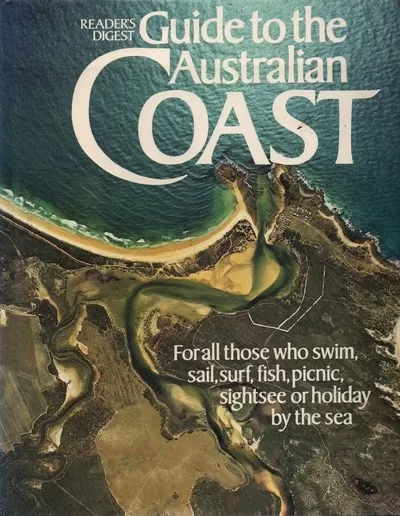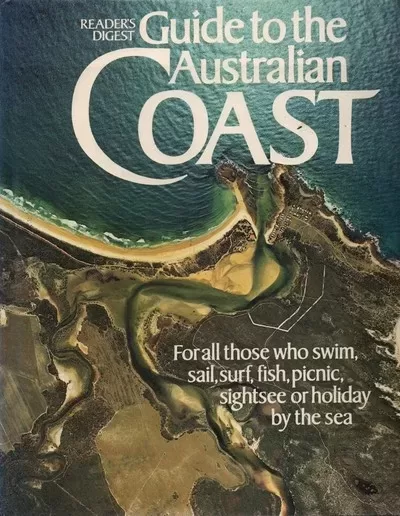Based in the Manning Valley on the mid-north coast of NSW, Mark Anning is one of the most experienced aerial photographers in Australia.
Clients have included the Festival of Sydney and other large events, state and federal mapping and agriculture departments, local councils, farmers and numerous real estate agencies. Contact us here to discuss the most effective options for aerial photography: helicopter, light aircraft or drone.
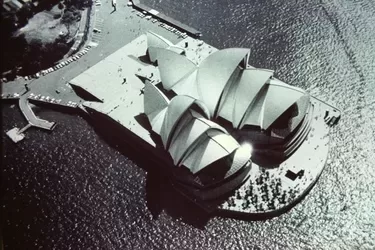

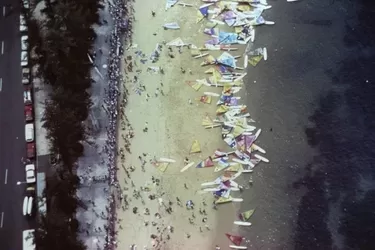

Left: Sydney Opera House. Right: Festival of Sydney Sailboarding.
All Rights Reserved © Mark Anning photos
My first professional photography assignment was way back in 1977, flying to Fiji from Australia in a Cessna-402 (VH-MAX) doing aerial photos for mapping as part of an Australian foreign aid project.
During the next five years as an aerial survey flight navigator and photographer for QASCO (Queensland Aerial Survey Company), I spent four months in Fiji, then flew to Papua New Guinea for four months in 1978, and again to PNG for eight months in 1981.
The rest of the year we followed the sun, flying north to Queensland during the winter and south for the summer, based out of Melbourne’s Moorabbin Airport.
One assignment was the aerial photography for the Reader’s Digest Guide to the Australian Coast, which still sells for around $30 online – more than 40 years later! (Reader’s Digest Guide to the Australian Coast – search on eBay Australia)
Reader’s Digest Guide to the Australian Coast
Reader’s Digest Guide to the Australian Coast ( via Amazon)
Reader’s Digest Services Pty, Sydney, NSW, 1983. 1st Edition. Hardcover. 480 pages.
A handsome book, with aerial photos of nearly every part of the Australian coastline. It is more than that as well, containing an introductory section on how coasts are made, life along the seashore, shells, beaches, rocky coasts, rockpools, wetlands, coral reefs, fish and birds
To accompany my aerial photos, the book also featured the magnificent photography of renowned Australian photographers, David Moore and Peter Solness. The book still holds its value for rock fishermen and surfers, although obviously the world is a much different place now.
I now use and recommend a Mavic 2 Pro drone with a Hasselblad camera. – Mark Anning
The camera is a Wild RC-8 or RC-10, 9 1/2″ square format mounted over a hole in the floor of the aircraft.
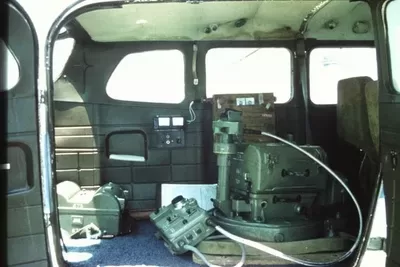

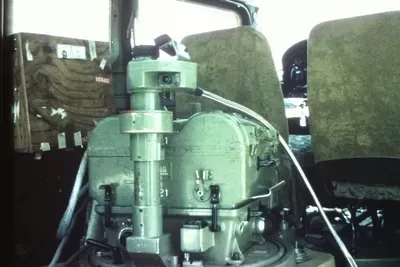

Wild RC-8 camera, 9 1/2″ square format mounted over a hole in the floor of a Cessna 206 aircraft,
VH-DGD, in Papua New Guinea. © 1978 Mark Anning photo. All Rights Reserved.
Reader’s Digest Guide to the Australian Coast talks about the tasks required on page 82.
A Navigation sight, very similar to a bombardier’s sight, is mounted through the floor. “The precision achieved far exceeds that of wartime bomb aiming” because in wartime the plane only has to hit the sweet spot and release the bombs, whereas in survey work the plane has to maintain that line for miles.
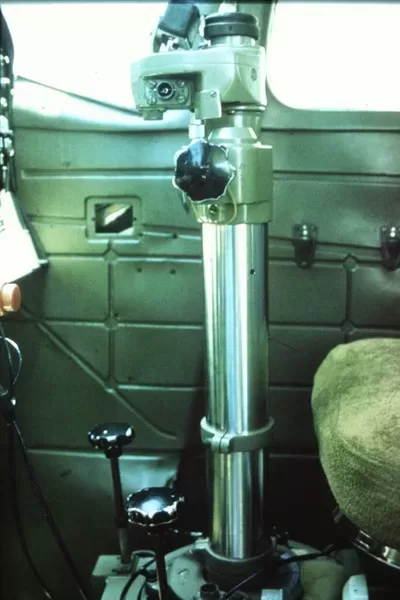

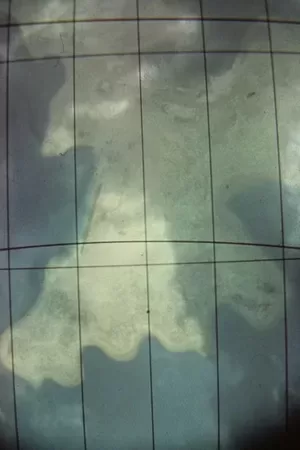

Navigation sight for Wild RC-8 camera, 9 1/2″ square format mounted over a hole in the floor of
Cessna 206, VH-DGD, in Papua New Guinea. © 1978 Mark Anning photo. All Rights Reserved.
Cloud free days were needed – if there was cloud below we couldn’t see the ground and cloud above the aircraft meant unwanted shadows covered the ground. The photos in this book were made from a height of 3000m. The Victorian pics were done from a Cessna 206 (VH-DGD) and the rest were done from VH-CJA a twin engined Cessna 402.
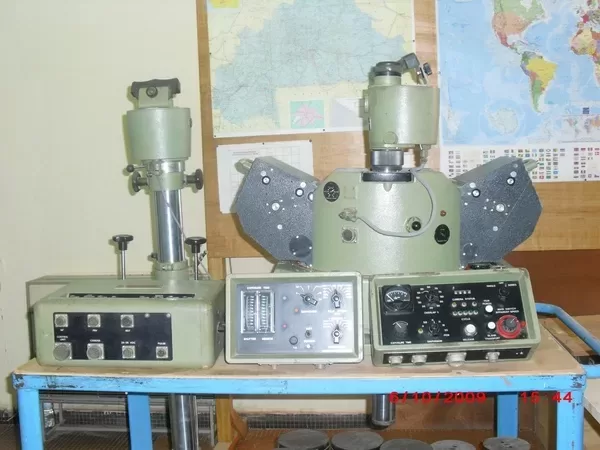

Wild Heerbrugg RC-10 Mapping Camera with a 9 x 9 inch image format were employed with six or twelve inch focal length lenses providing image scales of two miles to the inch and one mile to the inch respectively.
The Navigation sight is on the left and is seperate to the camera on the right. The two film cartridges are removable and are not locked shut in this photo.
The lenses were Super-Aviogon II (f/5.6, f=8.8 cm); Aviogon Universal I (f/5.6, f=15 cm); Aviogon Universal II (f/4, f=15 cm); Aviogon Normal II (f/4 f=21cm); and Aviotar II (f/4, f=30cm). All lenses were23x23 cm image format and with adjustable aperture on the values 5.6, 8, 11, 16, 22
The first RC8 Aerial Cameras with the Aviogon lens went into production in 1954 and were the main cameras used in mapping until 1978 when the Wild RC10 camera was released. In 1991 Wild teamed up with Leica and began moving to digital GPS and windows-based software.
Aviogon 6-inch lens cone, F151.77, 250mm, F-6″. With rotary shutter and diaphragm connected to the focal plane frame with optical marks and recording instruments: level bubble, watch, altimeter and film counter.
Aerial photography ~ Sydney 1982
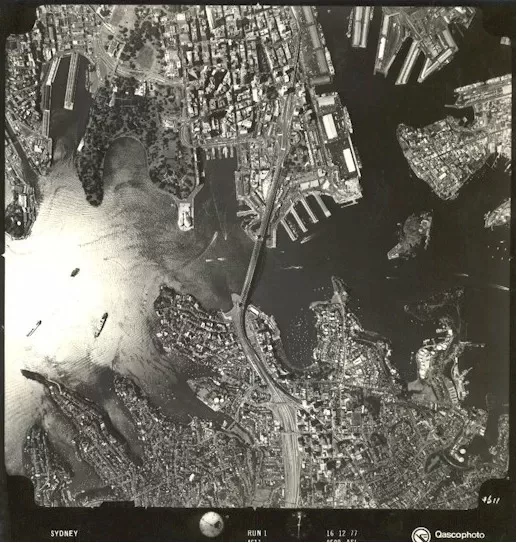

Nine inch square format cameras were mounted over holes in the floor of light aircraft to make these aerial photos.
The first aerial photographers were military reconnaissance fliers in World War I using handheld Kodak aerial cameras
By 2008, image capture transitioned from aerial film handling and photographic development to digital GIS and remote-sensing computational tasks.
Books of Aerial Photography in Australia
Australia: Aerial Photographs
by Klaus D. Francke
With its arid deserts, immense wilderness areas, and lush tropical regions, Australia possesses an amazing diversity of landscapes, which can only be properly viewed from the air. The photographs here reveal an immense and unexpected wealth of color-bright azure blues, deep greens, and terracotta reds-of such richness and intensity that it is hard to conceive of them as real elements in the natural world. This book is truly a wonderful revelation of the complexity and beauty of the Australian landscape.
Available from Amazon.com – click the book title to order:
Australia, the Greatest Island by Reg Morrison, Robert Raymond
Australia by Robert Raymond


| Kodak Color Camera Film Products AEROCOLOR III Negative Film 2444 Medium speed, color negative film for mapping and reconnaissance. Process AN-6 or C-41. AEROCHROME III MS Film 2427 Color reversal film for low- to medium-altitude aerial mapping and reconnaissance. Process AR-5. AEROCOLOR HS Film SO-846 High speed color negative film for low- to medium-altitude aerial photography. Process C-41. AEROCHROME HS Film SO-359 High speed color reversal film for low- to medium-altitude mapping and reconnaissance. Process E-6. Infrared Camera Film Products Black & White Infrared Infrared AEROGRAPHIC Film 2424 Black-and-white infrared film is capable of reducing the effects of haze. Ideal for vegetation surveys, to highlight water locations; and multispectral aerial photography. Color Infrared AEROCHROME III Infrared Film 1443 False-color reversal film, high dimensional stability for vegetation surveys, camouflage detection and earth resources. Replacing AEROCHROME II Infrared Film 2443. 1443 Film features: Lower contrast for improved shadow and highlight detail Higher resolution for sharper images New processing options, including Process C-41 Enhanced color balance for easier information extraction Improved film backing reduces static and scratching for cleaner film scanning AEROCHROME III Infrared NP Film SO-734 Similar to 1443; greater infrared response, suitable for higher altitudes. | Black and White Camera Film Products PLUS-X AEROGRAPHIC Film 2402 Medium speed, high dimensional stability for aerial mapping and reconnaissance. PLUS-X AERECON II Film 3404 Medium speed, fine-grain, medium to high-altitude reconnaissance film. TRI-X AEROGRAPHIC Film 2403 High speed, high dimensional stability for aerial mapping and reconnaissance under low levels of illumination. TRI-X AERECON Film SO-050 Similar to 2403. Thin base for increased spool capacity. DOUBLE-X AEROGRAPHIC Film 2405 Medium to high-speed, popular film for mapping and charting. High dimensional stability. AERO LX Film 2408 Intermediate speed, very fine grain, medium to high-altitude mapping and reconnaissance film. Medium contrast. PANATOMIC-X AEROGRAPHIC II Film 2412 Intermediate speed, very fine grain, medium to high-altitude mapping and reconnaissance film. Medium contrast. PANATOMIC-X AERECON II Film 3412 Similar to 2412 Film. Thin base for increased spool capacity. Suitable for medium to high-altitude reconnaissance. AERECON High Altitude Film 3409 Thin base, extremely fine grain, high definition film for high-altitude, stabilized platform aerial cameras with high quality optical systems. |

